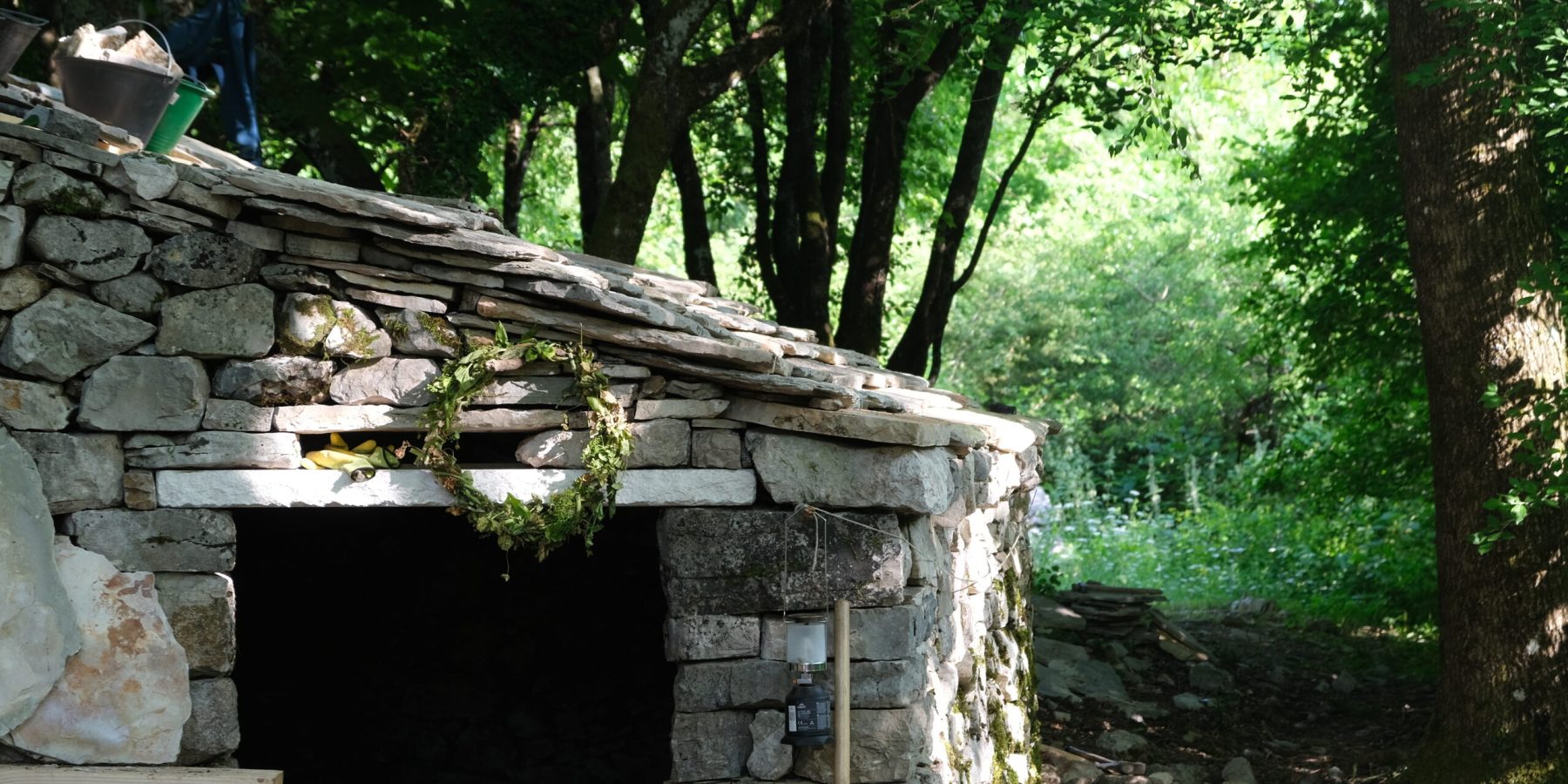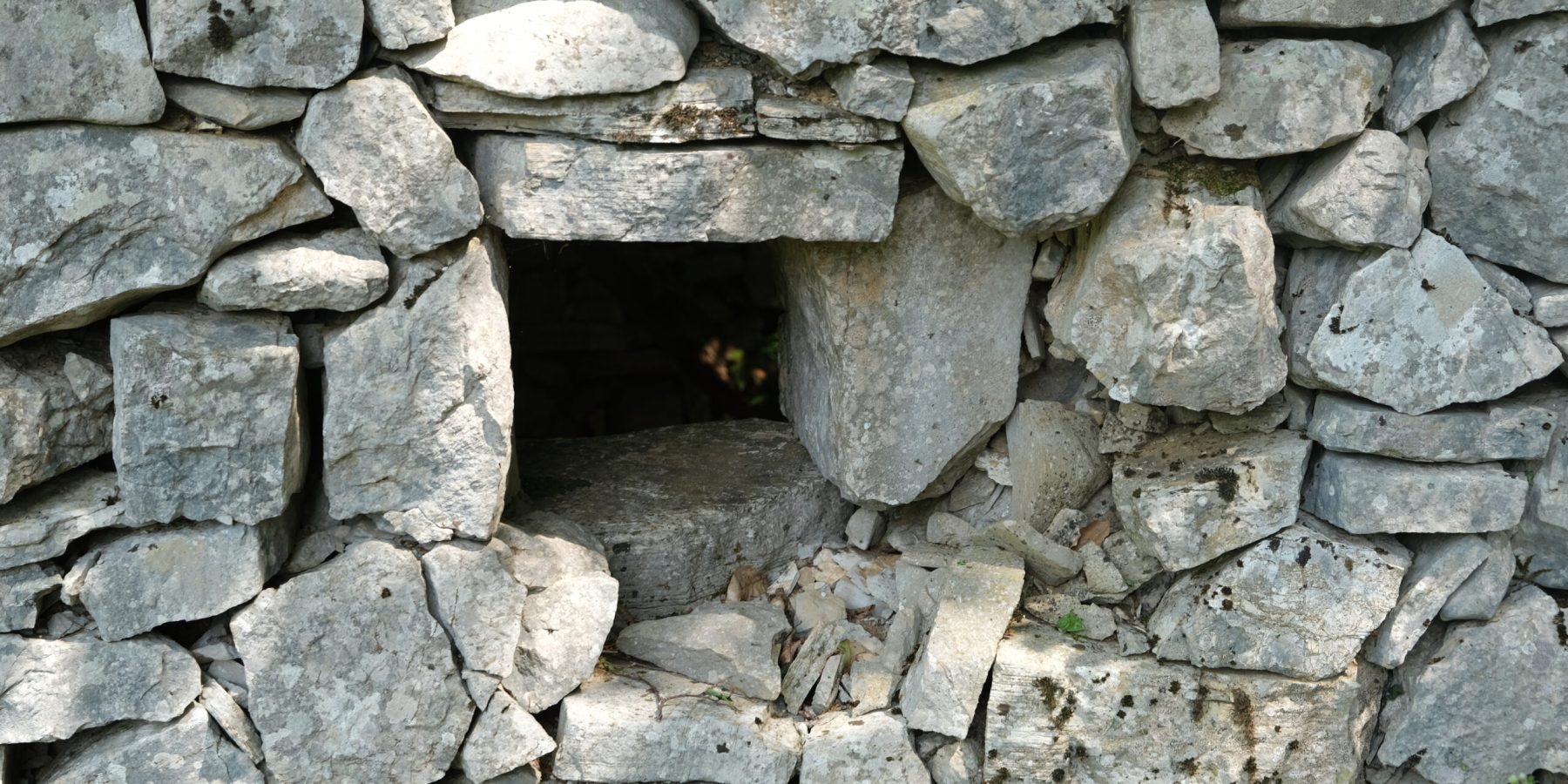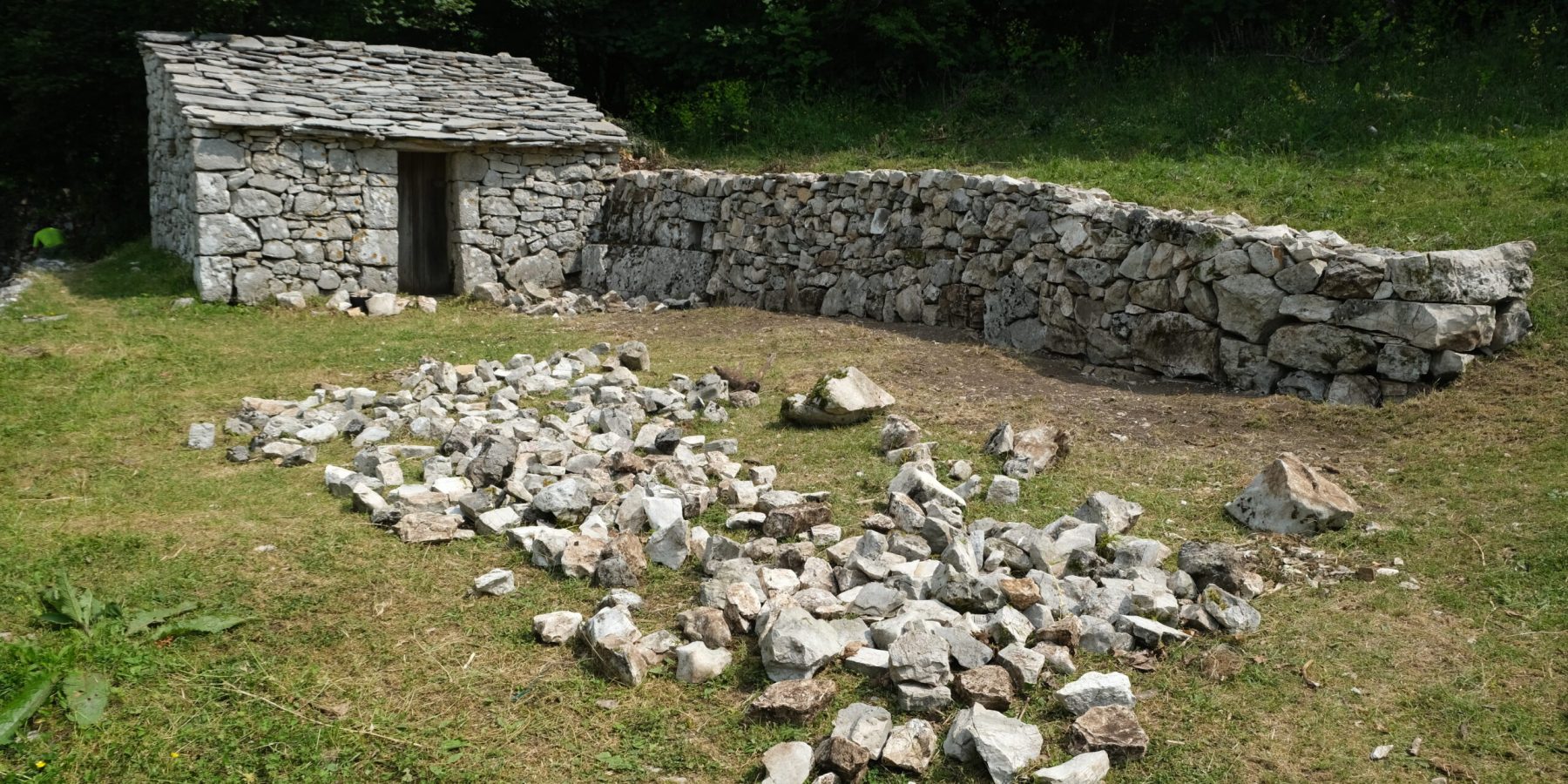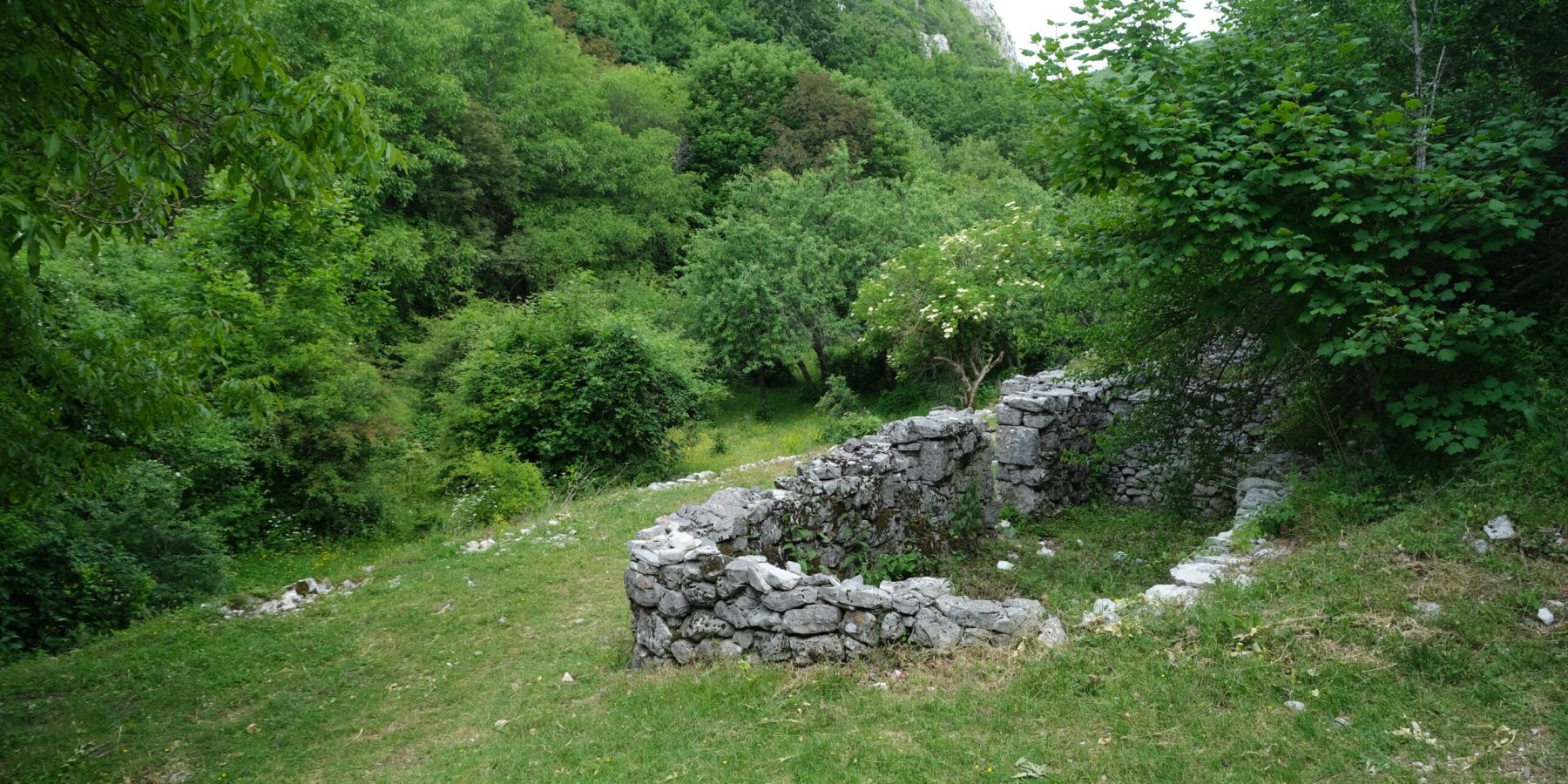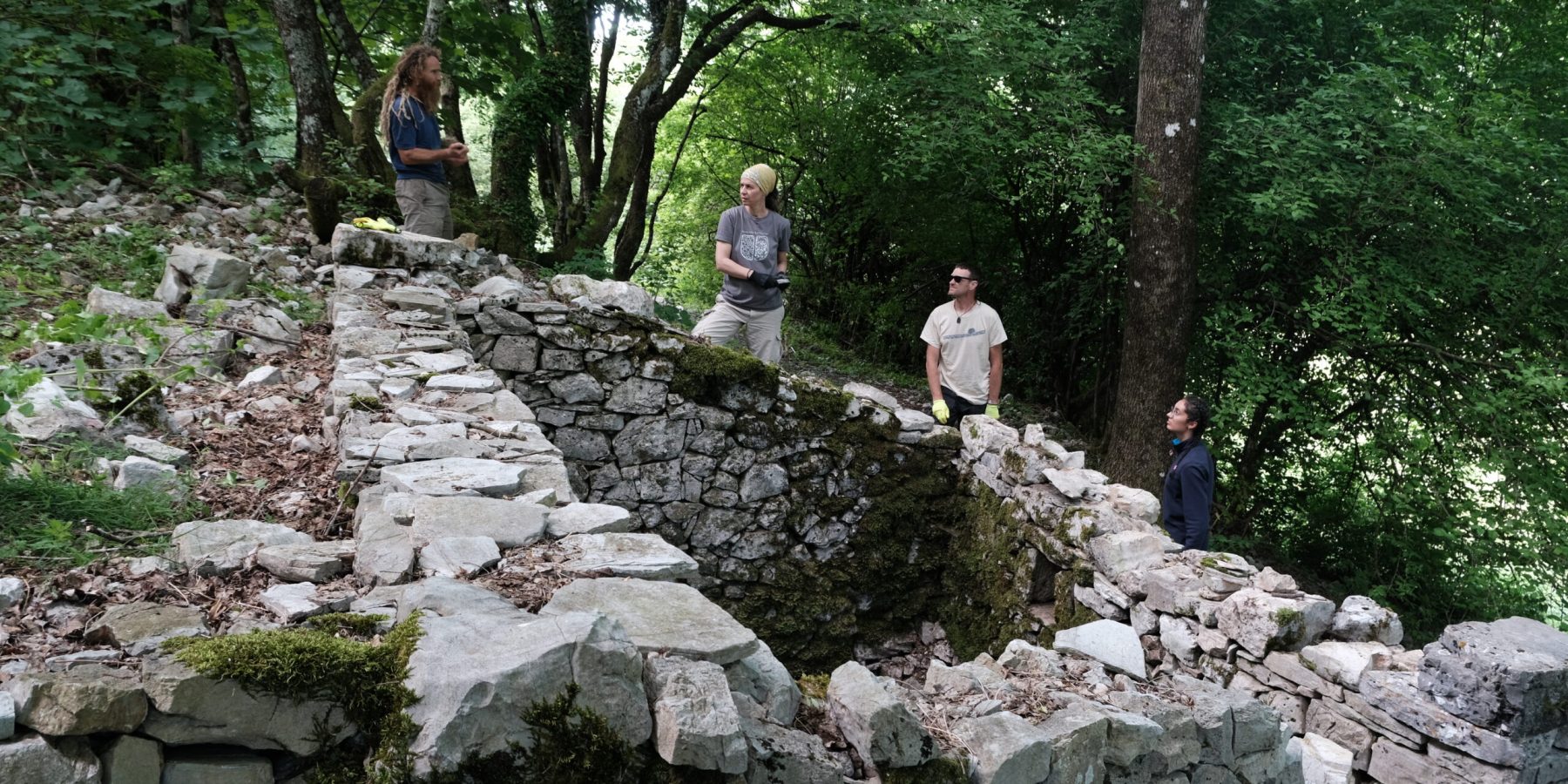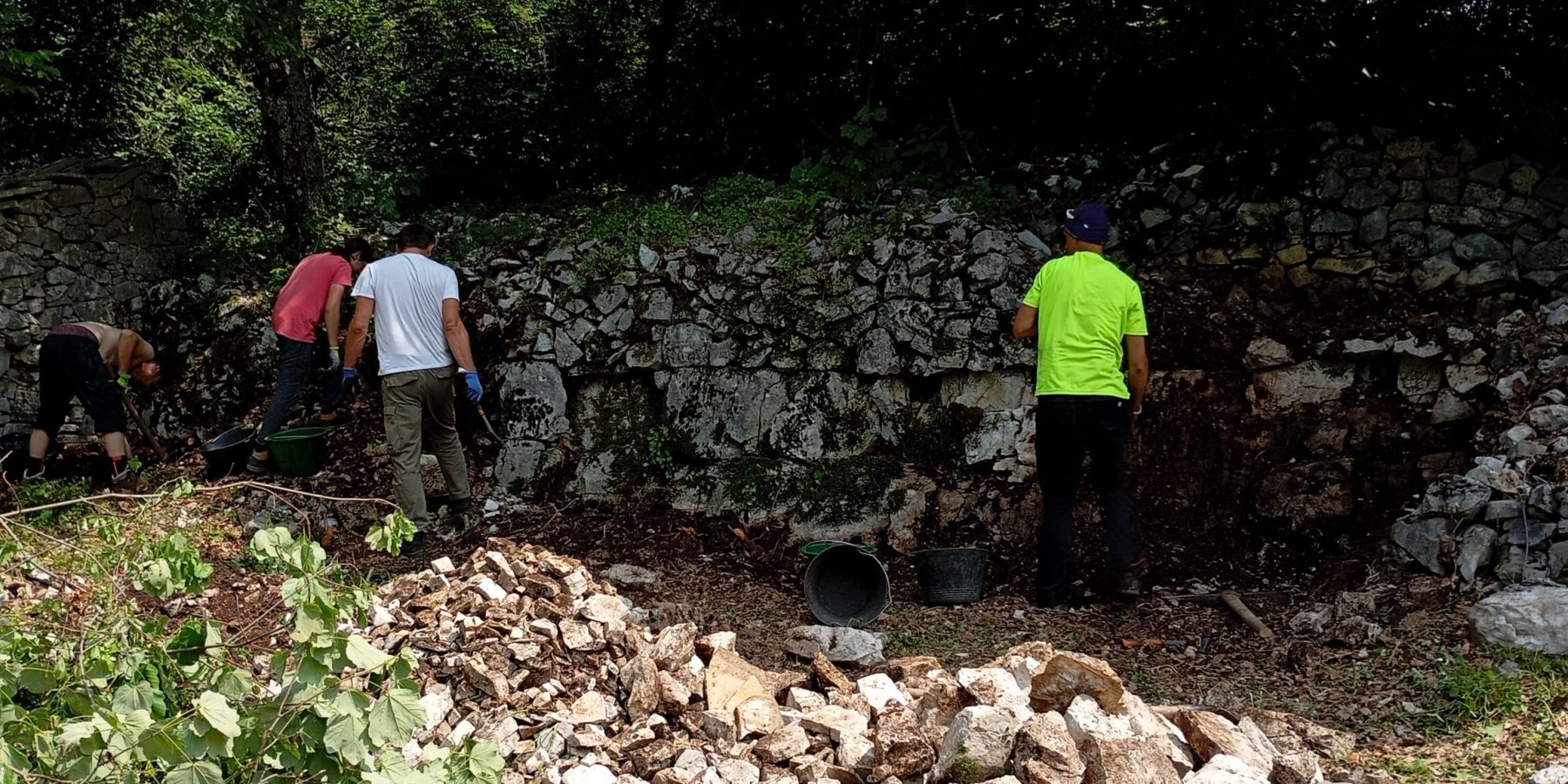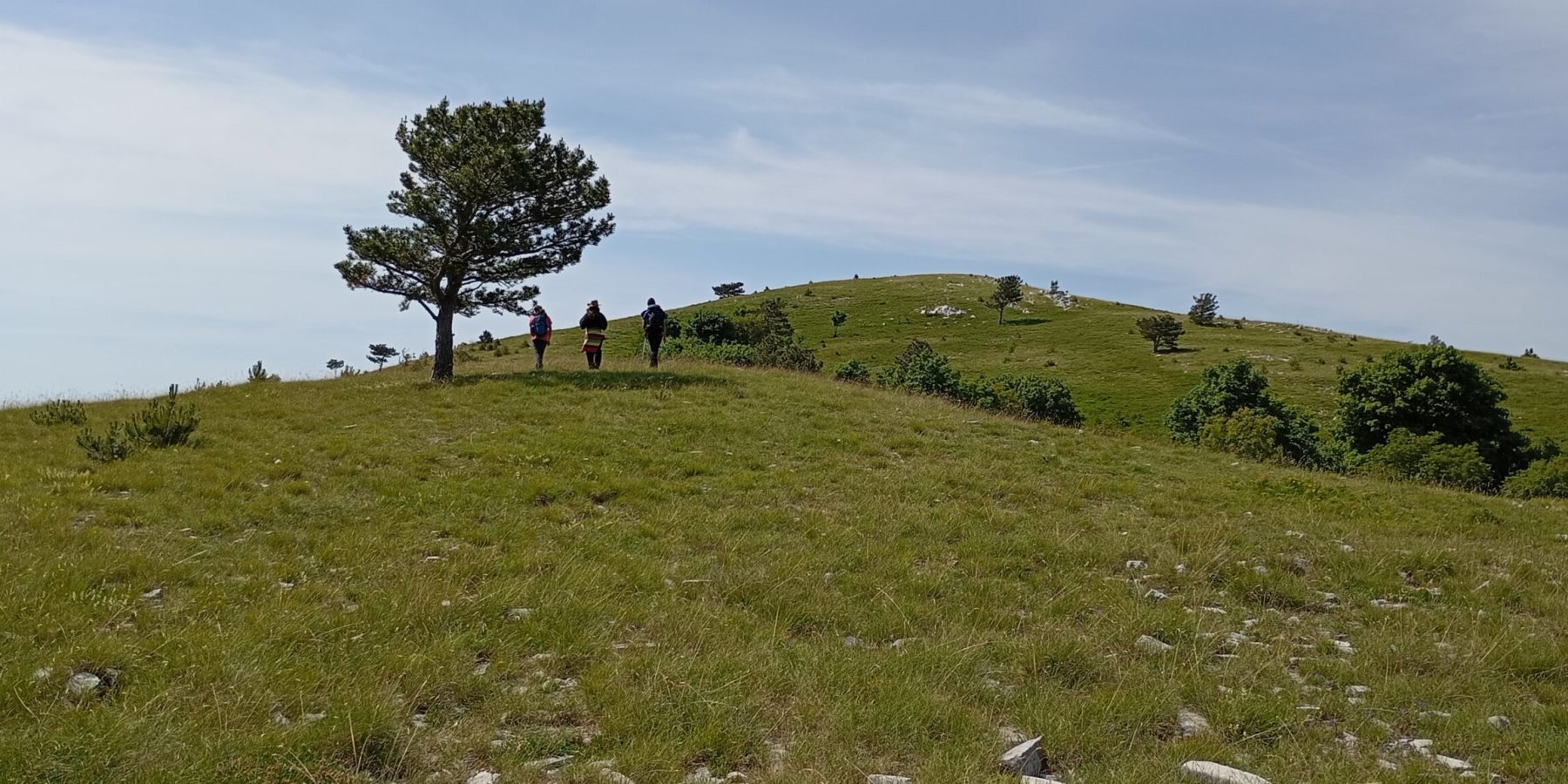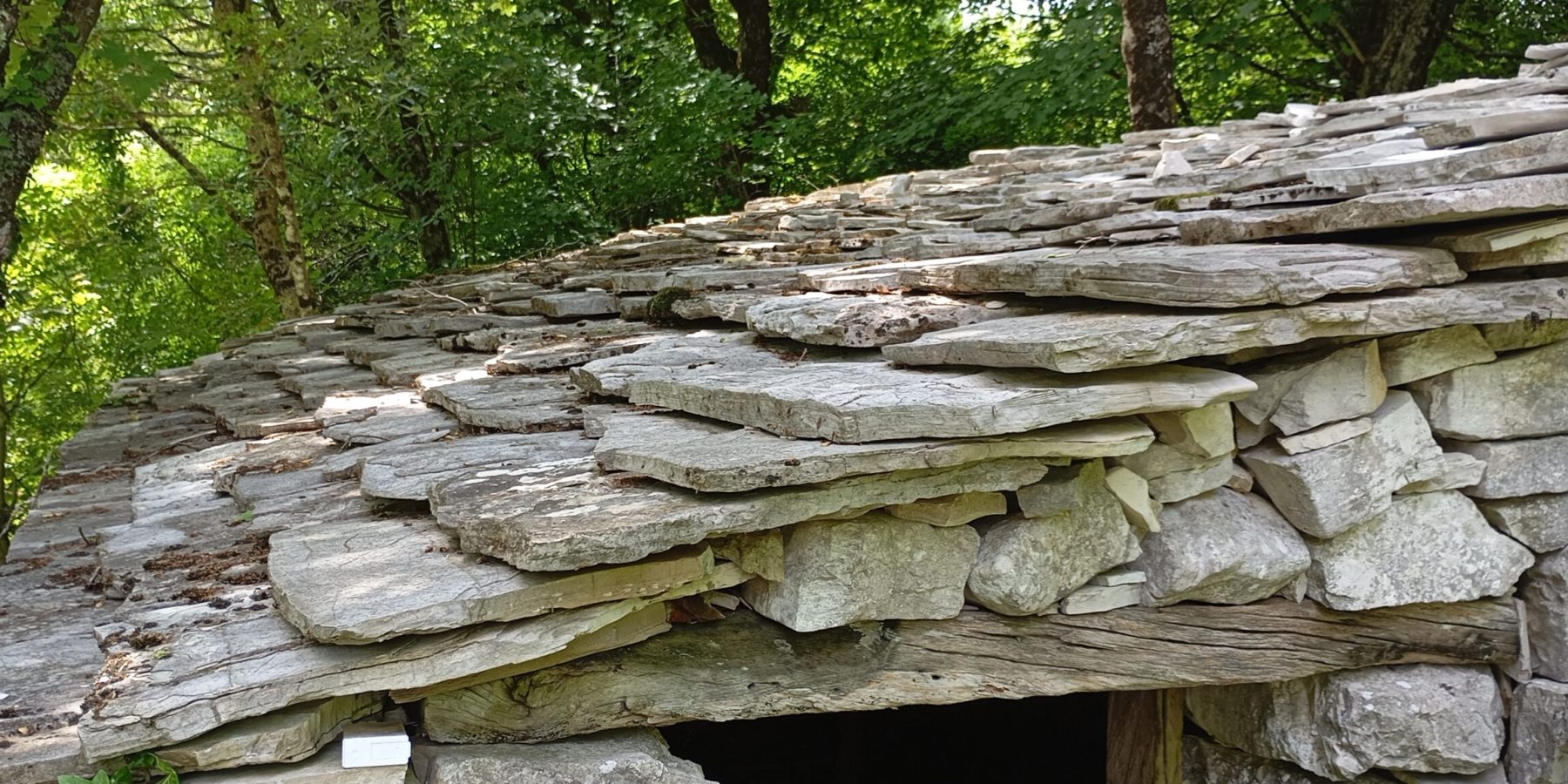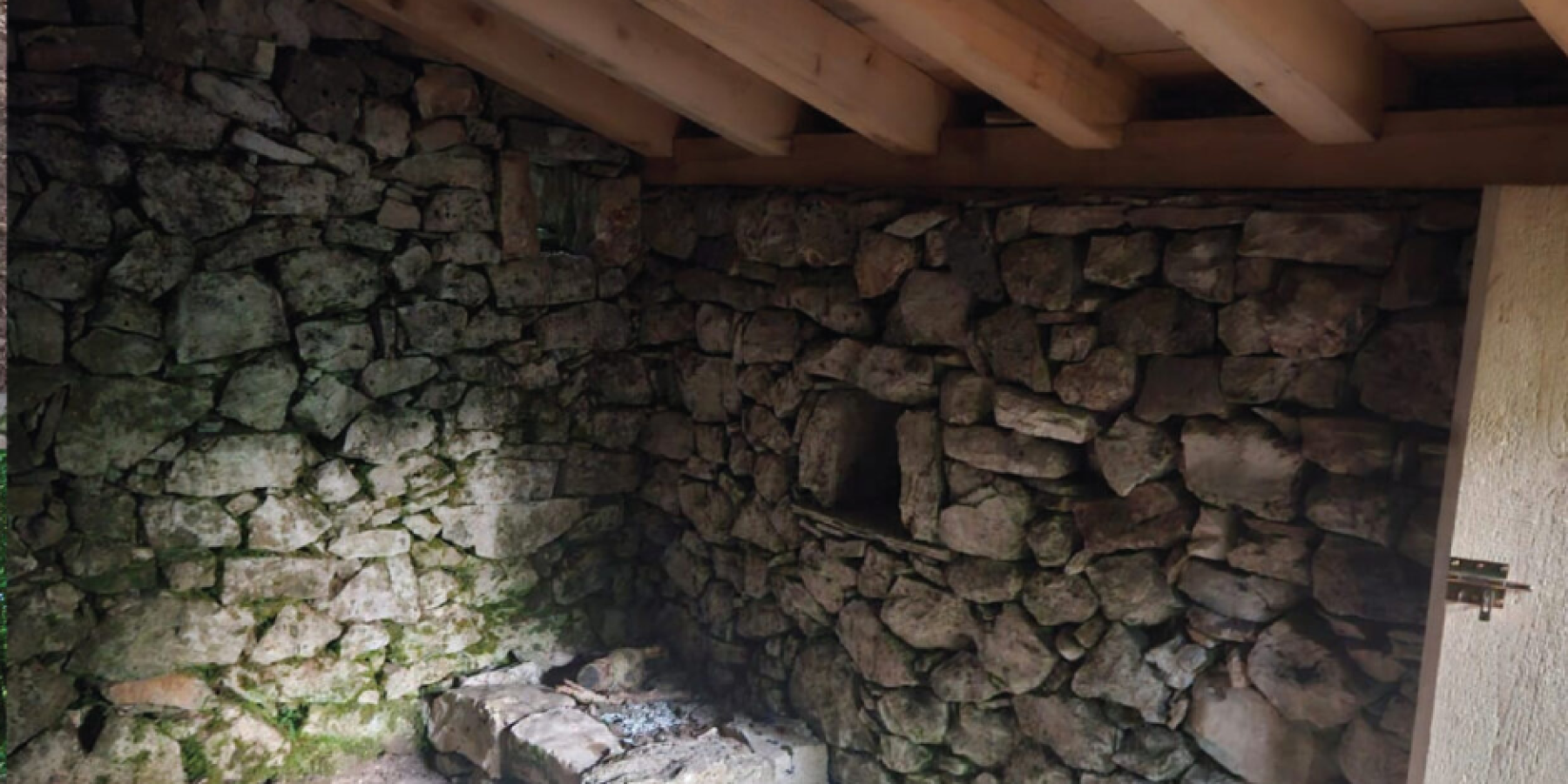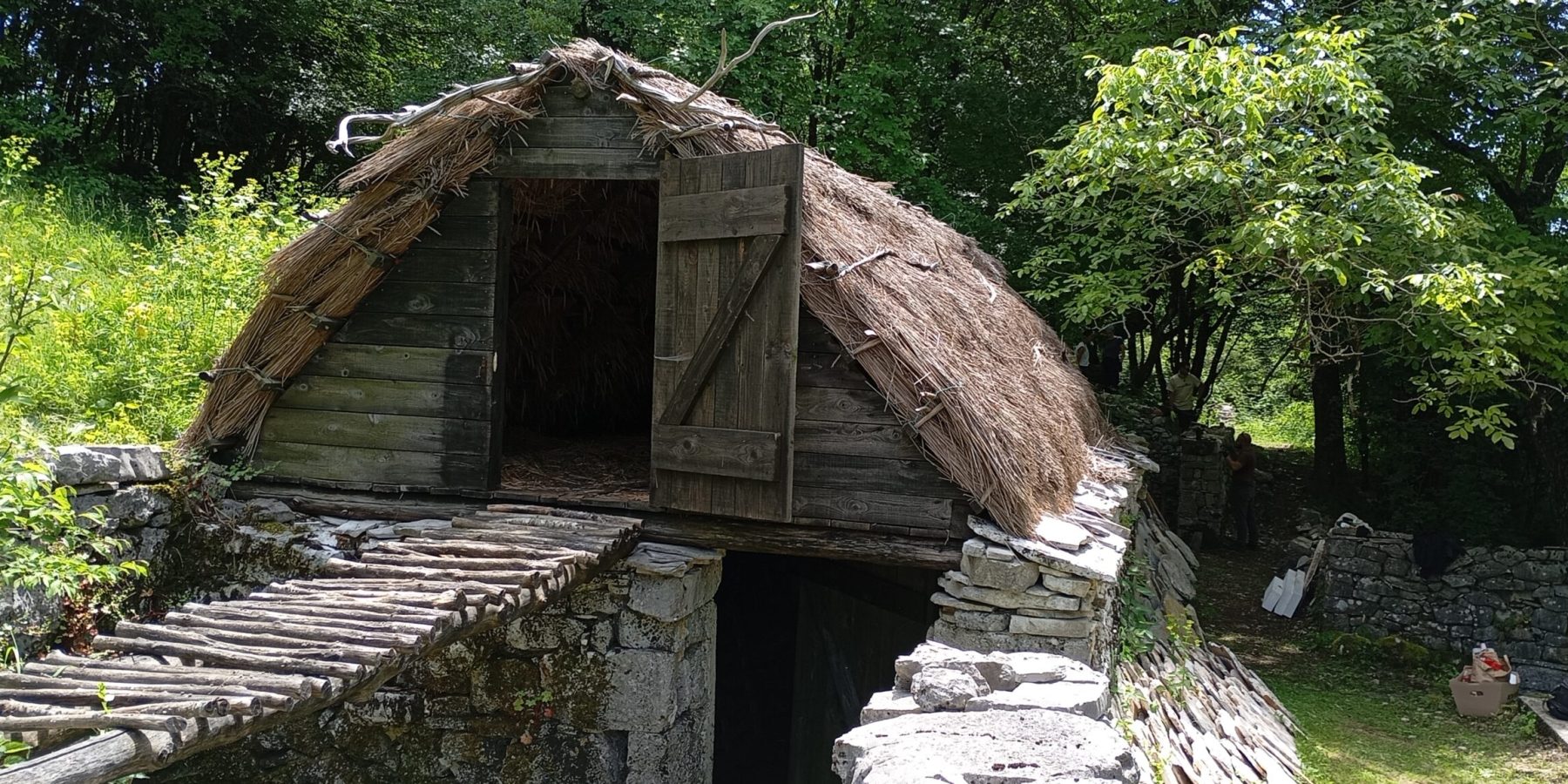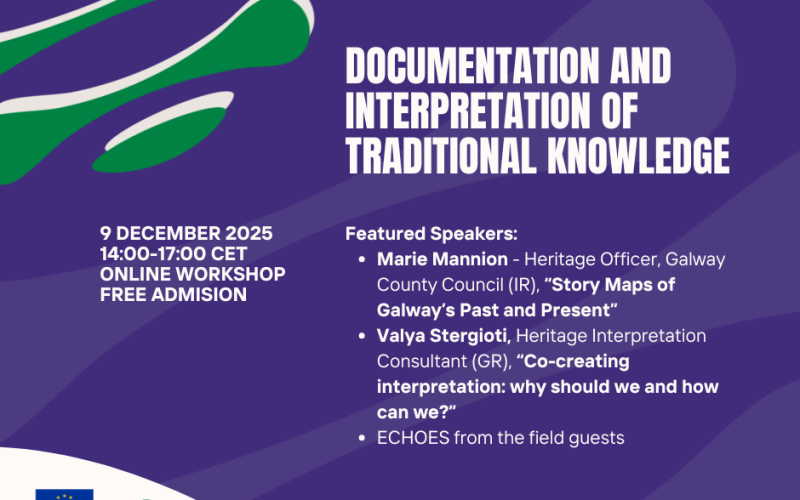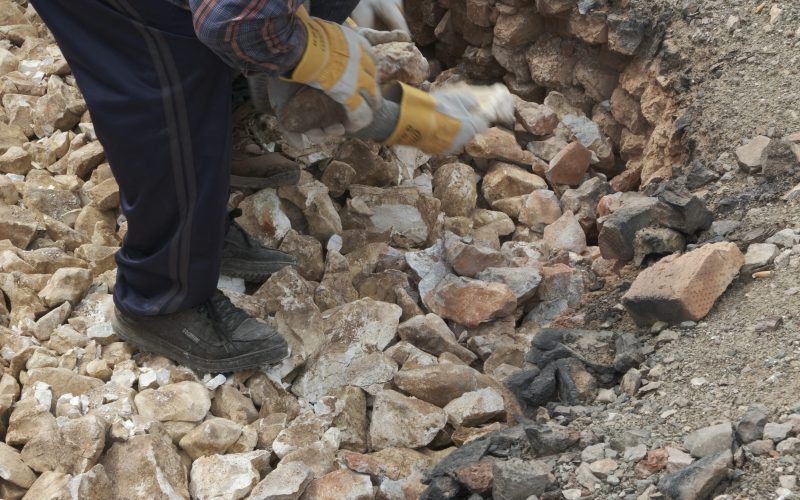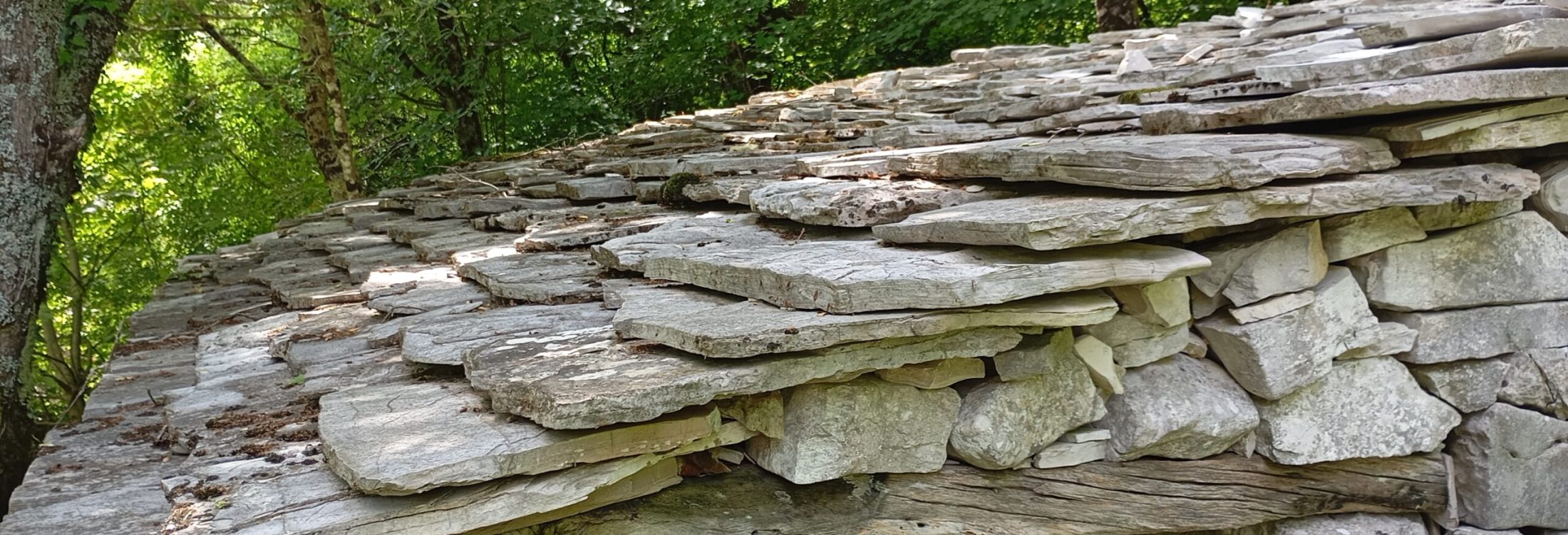
ECHOES Report from first Twinning Cultural Activity in Croatia
From May 31 to June 8, 2025, in the summer settlement on the slopes of Učka, we organized the 15th edition of the Heritage School Petrebišća 2025. The program brought together students, young professionals, and enthusiasts from diverse backgrounds – from architects, anthropologists, and ethnologists to natural scientists and builders. This year, around twenty participants from Croatia and abroad joined us for nine intensive days of building, learning, and living together at the camp.
Dragodid prepared and delivered the program this year in close international cooperation with our partners from Greece (Boulouki) and Ireland (The Dry Stone Wall Association of Ireland – DSWAI), as well as in partnership with Učka Nature Park and the Municipality of Mošćenička Draga. In the lead-up to the school, we held regular co-creation sessions with our partners to coordinate the program, divide responsibilities, and define the workshop methodologies. Right before the start, we exchanged knowledge about the tools, techniques, and terminology of dry stone construction in our respective countries. This exchange laid the groundwork for a shared field of practice, where each partner contributed their expertise toward achieving our common goal: the Irish partners, with our support, led the restoration of the walls and roof, while our Greek colleagues took charge of rebuilding the stone floor. As in previous years, thanks to our long-standing cooperation with the REMPART network, several French volunteers also joined the program.
Work tasks
On-site, we focused on three main tasks: restoring the dry stone hut’s roof using stone slates, laying stone flooring (cobblestones), and restoring two collapsed dry stone structures. The central task of this year’s school was the restoration of the stone hut, where we continued building above last year’s level, adding several rows of stones with particular attention to the corners, door, and window.
The roof rests on a wooden substructure and is finished with a covering of stone slates. We also completed the interior of the hut: the floor was paved using a technique shared by our Greek partners, and we built a stone hearth in one corner. As a final touch, we installed a new wooden door.
The second task was the restoration of the retaining wall. The work began with removing soil and preparing the site, resulting in a double-faced retaining wall, with a visible front face and a rear face embedded into the terrain. This structure now restores purpose and coherence to an area that had been neglected for years.
The third neglected structure we cleaned and partially restored this year was a terraced stone mound: a stone wall built on top of solid bedrock. Before the work began, it was completely overgrown and almost unrecognizable, swallowed by the forest. After clearing the vegetation, we cleaned the stones and defined the structure of the wall.
All activities were conducted under the guidance of experienced leaders from our team and our partner organizations, and participants rotated between tasks to gain a wide range of knowledge and skills. For early risers, mornings began with exercise sessions, while the evening program was dedicated to presentations and discussions. We hosted:
The educational program was enriched with guided walks designed to connect the workshop activities with the natural and cultural context of the area. Participants were introduced to the mythical-historical trail Trebišća – Perun, guided through the village of Petrebišća with an overview of the activities we have been conducting there since 2010, and included in a thematic walk focusing on natural resources and human interventions in the landscape, sparking discussions on possibilities for sustainable management of the area. We concluded the program with a hiking trip to the village of Mala Učka to further emphasize the connection between education, heritage, and landscape.
In delivering the program, we aimed for minimal environmental impact by organizing an ecologically sustainable camp. We slept in tents, worked outdoors or under shelter, and prepared daily meals on gas stoves. The food was mostly vegetarian, drinking water was provided in cooperation with the local utility company, and electricity was supplied through temporarily installed solar panels. Waste was managed through composting and recycling.
This year’s school was rich in content and organizationally demanding, but it was successfully implemented thanks to the excellent cooperation of everyone involved. We are pleased with the results we achieved, both on the ground and in the mutual exchange of knowledge and experiences. We would like to thank all the participants for their dedicated work and positive spirit; our partners Boulouki and DSWAI for their valuable contributions and enthusiasm; Učka Nature Park and the Municipality of Mošćenička Draga for their longstanding support; the REMPART network for continuing our collaboration; Branko Orbanić for the stone slabs; and Domagoj Nakić for the doorstep stone. Thanks also go to the lecturers, cooks, helpers, and everyone who contributed in any way to the successful realization of Petrebišća 2025!
Enhancing Cultural Heritage Skills Across Europe (ECHOES) project, led by partners from Croatia (DRAGODID), Greece (Boulouki), and Ireland (The Dry Stone Wall Association of Ireland), is dedicated to the preservation, advancement, and promotion of European cultural diversity and heritage. The project is co-funded by the European Union, Creative Europe Program, action “European Cooperation Projects”.
